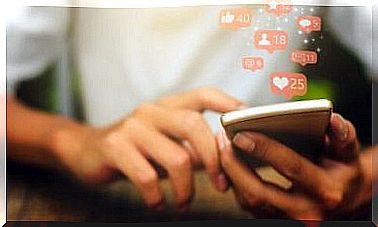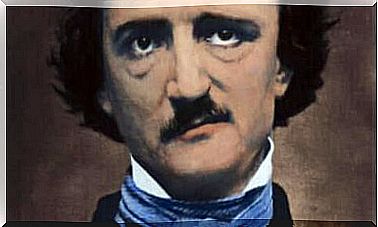Cognitive Biases: When We Think Wrong, We Act Wrong

Every day we make a lot of decisions. And most of the time we do it at lightning speed, almost without thinking. It is rare that we take into account all the consequences of our various choices. We choose almost blindly from the solutions available to us, with the influence of what are called cognitive biases.
At other times, especially when we attach great importance to the decision, we evaluate all available information, in order to make the best possible decision. However, as I said, there is a factor that influences the decisions we make and the solutions we choose, but which we often do not think about. And this factor is cognitive biases. These biases can be dangerous, because they can make us make unrealistic and unwise decisions.
But heuristic and cognitive biases are not bad in themselves. In fact, we could say that they are a kind of mental shortcuts. Shortcuts that can certainly make up for it for us, but shortcuts after all. We describe them as shortcuts, because we use these biases to save mental energy (cognitive resources).
Let us e.g. say you go to a bar and spend half an hour pondering which drink to order. You consider the value of each individual drink and take the time to think of the best solution.
After using all this mental energy, you are exhausted. You wasted time that you could have invested in something else. Heuristic and cognitive biases accelerate the thought process. They save resources that you can use for other, more important tasks.

Two different ways of thinking
According to Daniel Kahneman, there are two different ways of thinking. He calls them “Fast Thoughts” and “Slow Thoughts”. In the first system, the fast thought system, our thoughts go on autopilot. This system usually works on a subconscious level. Emotions play a big role in this kind of thought process. Therefore, it often leads to thoughts filled with stereotypes.
The function of the slow thought system is to guide our intuition. Sometimes it helps us, but sometimes it misleads us. This conscious thought system is less common and requires more effort.
This system of thought is based on conscious, logical and considered thinking. The exact opposite of the quick mindset. Its main function is to make final decisions. One could say that it has the task of observing and controlling the intuition that the quick mindset produces.
The first system is usually more dominant. In contrast, the second system is usually sluggish. We usually let our quick thoughts guide our steps. As you can imagine, this trend has different repercussions.
We draw hasty conclusions and overestimate the importance of our first impressions. Furthermore, we confuse random relationships and rely too much on what we already know. When we engage in quick thinking, we tend to ignore other information that is available to us.
Heuristic thinking
We define heuristics as a shortcut to active mental processes. As such, it is a measure that saves or rationes our mental resources. Because our cognitive (mental) capacity is limited, we divide our resources. Normally, we devote the most resources to such things (worries, activities, people) that require the most mental effort.
It is easy to follow the current without noticing it. But if the terrain is rugged and we are afraid of falling, we start using more of our cognitive resources. We become more attentive and watch out for.
Ordinary heuristics
- Accessibility heuristic: We use this to assess the probability that something will happen. And we make these assessments based on information we already have. As an example, there is a large amount of violence on TV. Therefore, people who watch a lot of TV often think that violent crimes are more common than people who do not watch much TV.
- Simulation heuristics: This is people’s tendency to judge the probability that something will take place depending on how easy it is for them to imagine this. It is believed that something is more likely if it is easier to make an idea about it. If, for example, a terrorist attack occurs, it is easy to believe that jihadists were behind this. It is easier to believe this than to imagine that another group was responsible. Either because these other groups do not attack as often or because they usually use other methods.
- Anchoring heuristics: We use this to dispel doubts. There is a certain point of reference, the anchor, which we then adapt to arrive at our decisions. Let us e.g. suppose my team won the championship last year. Consequently, I think it is more likely that the team will win again this year, even though it only won this one time.
- Representativeness heuristics: Derivation based on the probability that a stimulus (person, action, event) belongs to a certain category. Let us e.g. say you know someone who was very good at science at school. A few years later you see this person in a white coat. You conclude that your old school friend has become a scientist, not that he is a butcher. But really, you have no idea if that is the case.

Cognitive biases
Cognitive biases are psychological effects that distort your way of thinking. Like heuristics, these serve to conserve cognitive resources. These biases can cause us to make quite serious mistakes. However, they can also in some situations help us make faster and more efficient decisions.
Cognitive biases: common examples
- Confirmation bias: The tendency to examine and interpret information in a way that confirms what we already believe in. If you invest in stocks, you will be looking for articles and blogs that solidify your investment ideas. You will probably not care about comments that differ from your opinions. Similarly, if you are buying a car, you will try to find reviews that highlight the positive aspects of the car. In this way, you get confirmation that you have made the right decision.
- False consensus effect: People tend to think that their own opinions, beliefs, values and habits are more prevalent in the general population than they really are. If I oppose the death penalty, I will think that most people in my country are of the same opinion.
- Fundamental attribution error: Also known as correspondence bias. This is the tendency to overestimate personality-based factors as explanations for other people’s behavior. If a classmate gets toothed on a test like you did under the same conditions, you are more likely to assume he was lazy than he was on a bad day.
- Wisdom bias: Our tendency to see things that have already happened as predictable. For example, if a friend is fired from his job, you may say that you knew it would happen, because the company had financial problems. But her dismissal was not something you could have predicted.
Now that you are familiar with heuristic and cognitive biases, you can be more effective when making decisions. Although it is difficult (and sometimes impossible) to avoid thought biases, you can reduce them if you are aware of them and understand how they work.
Evaluating alternatives and seeking information that is contrary to your beliefs are other ways for you to reduce their impact. As a bonus, you can get more creative in your thinking if you avoid cognitive biases.









